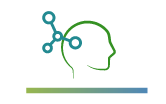
True North Life Navigation Charts
“You are not stuck. You’re just committed to certain patterns of behavior because they helped you in the past. Now those behaviors have become more harmful than helpful. The reason you can’t move forward is because you keep applying an old formula to a new level in your life. Change the formula to get a different result.” Emily Maroutian
“True North” is a reference to finding the position of the North Pole by compass or by locating a pole star so as to navigate properly. The phrase “discover your true north” was coined by Harvard Business School professor and author Bill George in his bestselling book by the same name. George explained that discovering your true north is about following your internal compass: just as a compass points at a fixed point on the globe, your personal true north guides you to your destination and helps you stay on track.
Do you ever wonder why you experience the same situation or types of people in your life over and over, often with the same negative results or unwanted outcomes? Perhaps it’s because you repeat the same behaviors during each encounter. To change the experience, you must change those habits and behaviors that created the narrative of your life so far.
But where to begin?
By completing what I call a Life Navigation Chart! This powerful tool will enable you to:
- Identify repeated behaviors in your encounters, experiences, situations, and relationships.
- Recognize any actions you’ve taken that have caused you, or those you care for, unhappiness or harm.
- Become more mindful of your motives in your relationships and your encounters with others.
- Identify what you want to change, determine why you want to change it, and define what your new outcome will be.
- Chart a new path if you encounter a situation that you responded to one way in the past but now you can respond to differently.
Most importantly, you’ll feel empowered, not victimized; become free of your bonds to painful experiences, situations, relationships, or events; and your future will no longer be charted by your past.
True North indeed!
What Is a Life Navigation Chart?
“If you continue to see things as they are…nothing can change.” Abraham Hicks, The Amazing Power of Deliberate Intent
The Life Navigation Chart is a visual encapsulation of how you interact and engage with the world and with others, and, most importantly, the results and outcomes of those interactions and engagements. The chart represents the encounters, situations, and relationships you’ve experienced in your life, and your responses and behaviors integral to those experiences.
Ultimately, the goal is to identify repeated patterns of behavior in order to correct your course and make a conscious effort to change the way you interact with the world. During this process, you will become truly awake to your own thoughts and behaviors, and you will be able to recognize when you might be slipping into your old ways of behaving.
What exactly is a pattern of behavior? Quite simply, it’s a recurring way of acting toward a given object or in a given situation.
Our behaviors, how we think, react, respond, etc., all have patterns, and sometimes those patterns can force us to grow. Patterns can tell us to try something, fix something, or remove something from our lives, which may require extraordinary effort, especially if we are in search of a new direction in our lives. It is up to us to consciously analyze our lives and take control of the only thing we can control – ourselves.
Emotional healing, forgiveness, greater peace and happiness, and a profound knowing of who you are and what you do or are drawn to can come from completing your chart. It is both a fact-finding and fact-facing process to uncover the truth about yourself. You will be searching for the attitudes, thoughts, beliefs, fears, actions, and behavior patterns that have been blocking you or causing you to do the unacceptable or unwanted things you do.
You’ll also learn how to observe your behavior patterns with as much objectivity as possible, paying particular attention to the actions you take. You’ll learn to ask yourself:
- Why do I behave this way?
- What’s in it for me, really?
- What part do I have to play in the relationship, encounter, or experience?
- If I could, what would I do differently to get a different outcome?
Finally, having identified your true motivations, unconscious beliefs, and behaviors, and their impact on your life, you’ll be able to change those behaviors during future encounters.
“As long as you blame others or anything for anything, you are disempowered.” Abraham Hicks, The Amazing Power of Deliberate Intent
I learned the value of creating a Life Navigation Chart many years ago while working on the Fourth Step in Alcoholics Anonymous.
The Fourth Step states, “Made a fearless and moral inventory of ourselves.” The ultimate objective is to take stock honestly, search out the behaviors which caused us and others unhappiness or harm, and get rid of them promptly and without regret.
For most of my life, I was unaware of parts of myself, especially my feelings. Without that self-knowledge, I constantly misperceived my own reality, which caused me and others real pain. So, I looked for ways to protect myself from the consequences of my destructive behaviors. These defensive manipulations – blaming others, denial, dishonesty, intimidation, and rationalization – led me to avoid taking responsibility for any of my actions.

Looking back through my inventory – and putting out of my mind the wrongs that other people had done – I resolutely looked for my own mistakes. Where had I been selfish, dishonest, self-seeking, prideful, mean-spirited? Where was I responsible for the results and outcomes of my behaviors?
After much fact-finding and fact-facing, I identified my true motivations and their impact on my life as well as the lives of others. Only then, was I able to change my behavior during future encounters.
Of course, my life has not become problem-free. In fact, some of the old issues reemerge again and again. The difference is that now I have the understanding and the tools to avoid old self-destructive ways of navigating my life.
If you are diligent, honest, courageous, and willing to change, I promise you that you’ll reap these benefits and more!
And How Does “Navigation” Fit Into This?
The National Geographic Society defines navigation like this: “Navigation is the art and science of determining the position of a ship, plane, or other vehicle, and guiding it to a specific destination. Navigation requires a person to know the vehicle’s relative location or position compared to other known locations.”
The earliest navigation methods involved observing landmarks or watching the direction of the sun and stars. Few ancient sailors ventured out into the open sea. Instead, they sailed within sight of land in order to navigate. When that was impossible, they watched constellations to mark their position.
In the 15th century, mariners began navigating by “dead reckoning (DR),” and it’s still the fundamental basis of course planning today. DR involves estimating a current position based on a past position, and always begins with a fixed point. The navigator’s prime concern is to know the boat’s position at all times. Navigating by dead reckoning involves calculating a new position or positions from a known departure point.
The intended path of travel is plotted on a chart with a series of DR positions, which allows the navigator to plan and monitor an efficient route, see what lies ahead, and avoid hazards. This requires meticulous observation and careful recordkeeping on a chart; errors could often result in a prolonged voyage at best and, at worst, disaster. The unwary boater who has neglected to plot an intended path and position would have no warning of impending dangers.

Without navigation, we would be literally lost at sea.
I believe the same can be said for navigating our lives. How many times have you felt as if you were floundering, not sure of where you were, where to go next, or how to get from where you were to where you wanted to be? Creating a Life Navigation Chart will enable you to plan and monitor your intended path in order to proceed on the correct course or in the right direction.
The Chart At A Glance
As you create your Life Navigation Chart, you’ll focus on the encounters, situations, and relationships of any significance that have the potential to teach you about yourself and your deeply held views. These “significant choice points” are like the dead reckoning points on a DR chart: they reveal your known departure point of behavior, the path of travel you’ve been on thus far, and why you chose a particular course in terms of a response or action.
The chart begins with a “Purpose Statement,” in which you define your goals and objectives for completing the chart as well as your desired outcome. It’s important to be able to articulate why you want to complete the chart and what you hope to achieve. Having a compelling reason will help motivate you to not only complete the chart, but to be willing to change any unwanted or undesirable habits and behaviors.
Following the Purpose Statement are two major focus areas, each with its own key components:
The Chart
- Who/what (person, event, situation, encounter, or experience)
- Why it’s in my chart
- What part of me was impacted: personal or professional relationships, finances, work/career, health/wellbeing (physical/emotional/mental/spiritual)
- Behaviors I exhibited and the impact on others
- What I can learn from it
The Way Ahead
- My recurring patterns of behavior
- My recurring impacts on myself and others
- My course correction (what I can do differently)
- My desired outcome
To be whole, you must perceive the whole, especially in terms of how your patterns of behavior impact others. Old patterns result in old outcomes, new behaviors in new. The more we know about our patterns of behavior, the better we understand the important choices we make. Being able to see repeated patterns in our lives will help us determine our current position, see what lies ahead, and change our course and direction to achieve a new outcome or arrive at a new destination.
Ready to throw off the bowlines and sail away from the safe harbor? The choice is yours!
The Nuts and Lightning Bolts
You can purchase the workbook, which includes the instructions and examples for completing each focus area, for a one-time fee of $50.00.
Then, if you would like some or a lot of help completing the chart, you can add on one of the options shown in the Pricing chart below.
Pricing
Options | Price |
You fill out your chart with no assistance from me. | $50.00 |
You fill out your chart and receive 1 hour of “how to” guidance from me. | $90.00 |
BEST VALUE You fill out your chart and receive 2 hours of in-depth analysis from me to determine your way ahead. | $135.00 |
What’s Next?
Need more information? Go to the Contact Me page, click the True North Life Navigation Chart button, add anything else I should know, and submit the form. I’ll get back to you with answers.
Eager to get started? Go to the Store and select the option that best fits your needs. I’ll send you the True North Life Navigation Chart workbook and instructions for completing it. If you purchased any additional hours of assistance, I’ll contact you to set up a date and time to chat via phone or Zoom.
